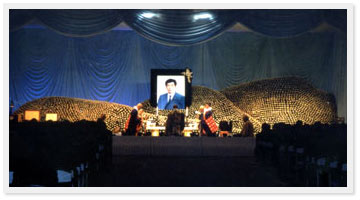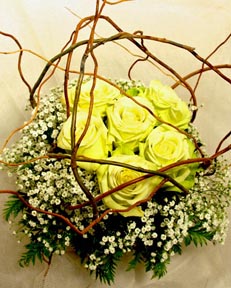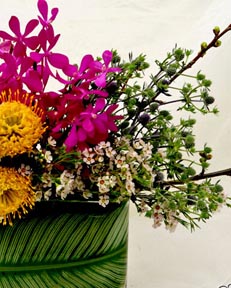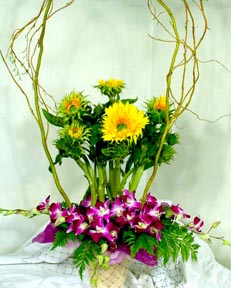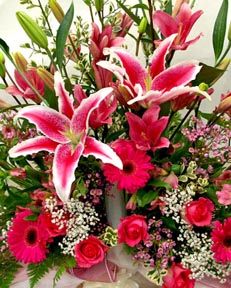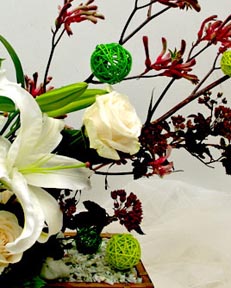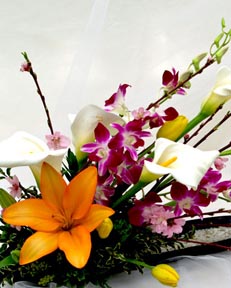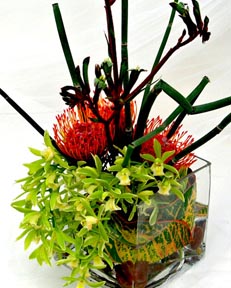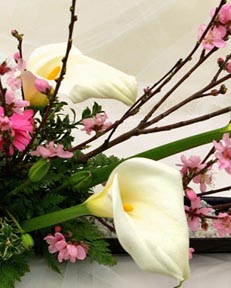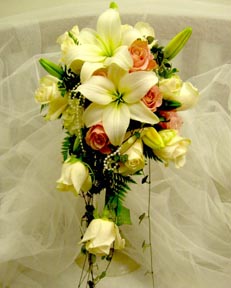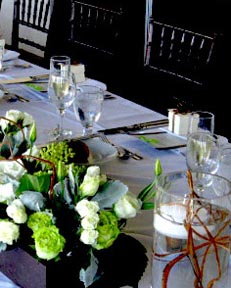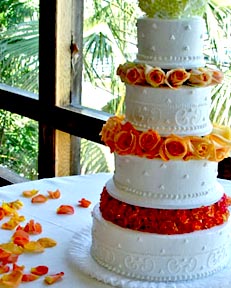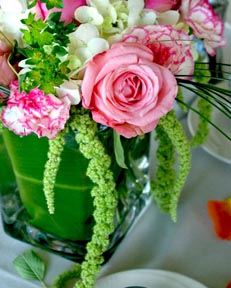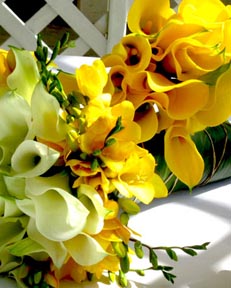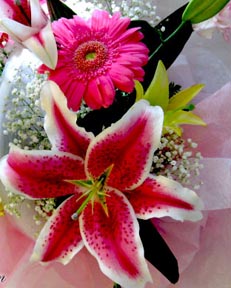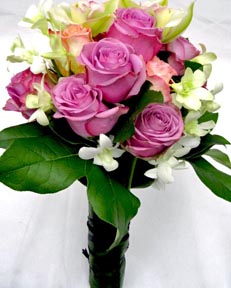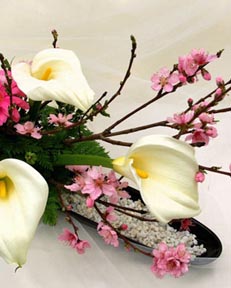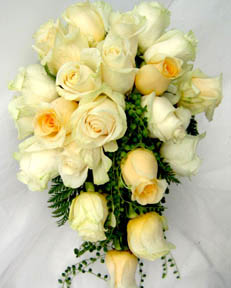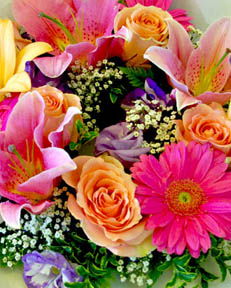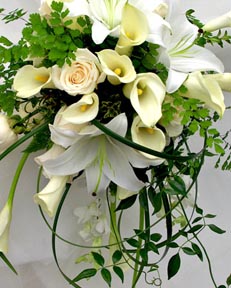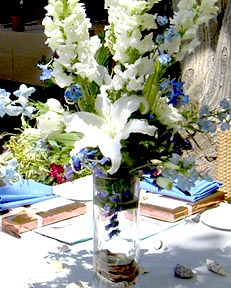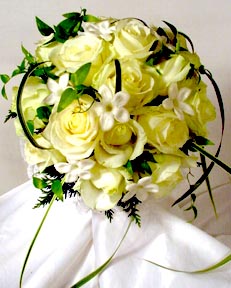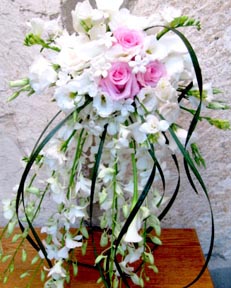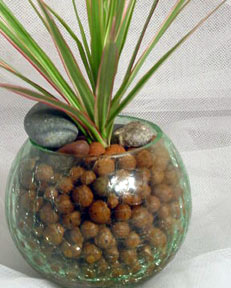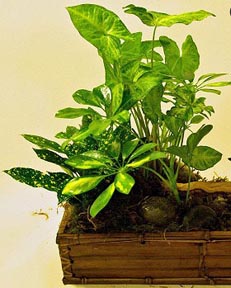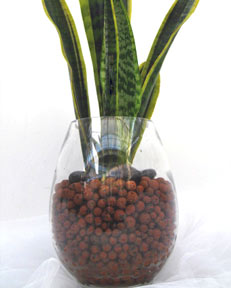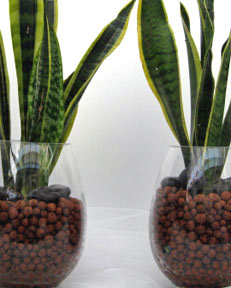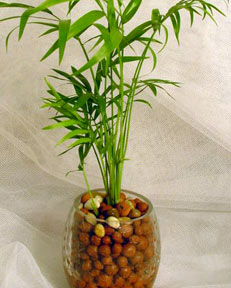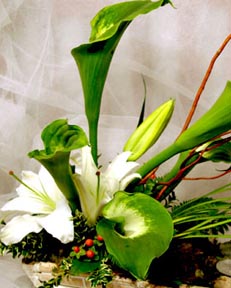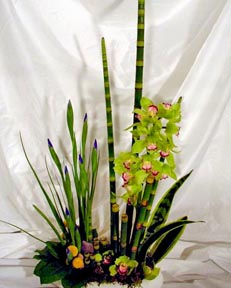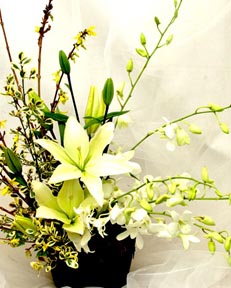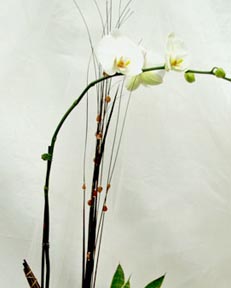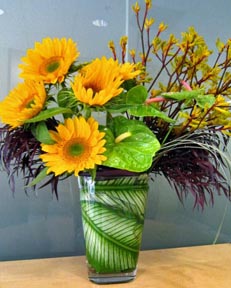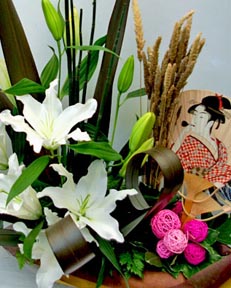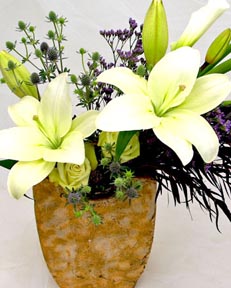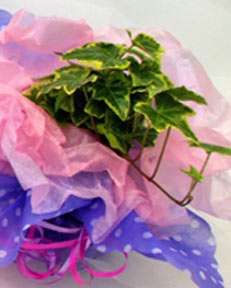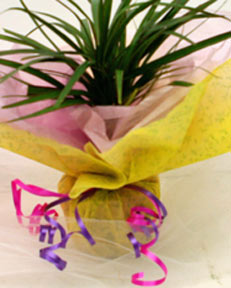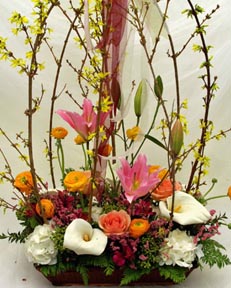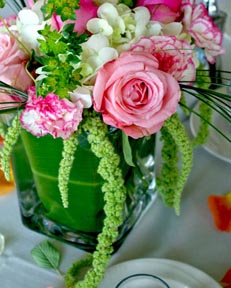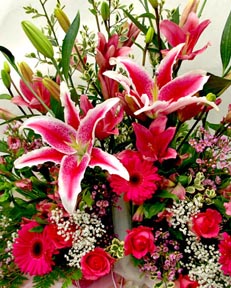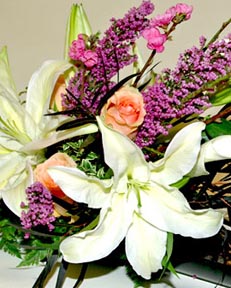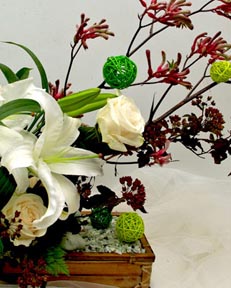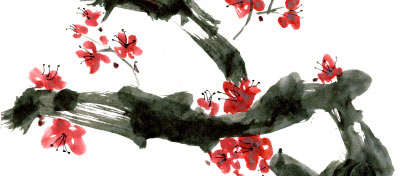
The Story of Angeluck
Our Global Floral Training »
First Shop / Celebrity Clients »
Television Work »
Story of the Million Dollar Funeral »
Read here about the story behind Angeluck, from my training in Japan, the U.S., and Europe, to my experiences and clients in the U.S. and Japan, and the legendary $1 million memorial service.
Training Around The Globe
I was born in 1963 to a florist with over 50 years of history in the ancient city of Kamakura, Japan. While attending a florist training institute in Tokyo, I became the understudy of Japan's top charismatic designer, Kao Ikeda. Master Ikeda was famous for having students quit within the first week of training, not being able to tolerate his strict teachings.
Not only was I able to train and excel under Master Ikeda, I was asked to take over his store after his passing. However, in order to live out my mentor's dream of winning contests in Japan and try his skills against designers from other countries, I decided I must first master the traditional flower arrangement of Japan, ikebana, before coming to the United States.
I learned ikebana from an elderly man, Kinsui Kaneko, who had taught masters of ikebana before retiring to the countryside of Yokohama. Having won awards, I had confidence in floral design, but not in ikebana. In ikebana, the flowers' roots are also considered part of the arrangement, quite different from the notions of floral design that I had been accustomed to.
Contrary to Master Ikeda's radical floral ideas and strict ways, Master Kaneko was a peaceful man who had the utmost respect for nature, and he was able to replicate nature in his work in a way that I had never seen before. I once saw him use the "gyodou-ike" technique, where only two pieces are used to look like a real pond. When he was finished, it was so pure and realistic that I could almost see fish swimming in the water. Master Kaneko's deep respect for nature and purity has been ingrained in me, and make up for more than half of my designs.
Chicago
In 1986, I came to the U.S. with the spirit of ikebana in me. I felt the fasted way to learn American floral design was to work at a florist, and came to Chicago. Not only was I amazed at the differences in florist operations, but I was also amazed at how American designs embraced "freedom" and "openness." I truly learned a great deal.
Holland
In 1989, I traveled to Holland to study under two-time world champion of floral design, Mr. Pitt Fandelberg. Holland is one of the world's top countries in flower production and export, and at that time, Hollands' dynamic vertical and horizontal designs were thought of as the most cutting-edge in the world.
I soon learned that for the Dutch, this cutting-edge design came about rather organically. In Holland, the horizon continues for as far as the eye can see, and trees have been planted in groups, creating the vertical and horizontal. I felt a strong similarity between the Dutch designs and ikebana- both floral designs recreate nature on a smaller scale.
My Dutch mentor experimented with a variety of collaborations between flowers and industrial or construction materials, similar to Master Ikeda. The spirit of using natural materials other than flowers has been ingrained in my DNA.
First Flower Shop
In 1990, I opened my first flower shop, and shortly thereafter entered and won several floral competitions. Located on Melrose, I had many celebrity clients and eventually gained an exclusive contract with Eddie Murphy Productions, including floral arrangements for his home and private parties. Other celebrity clients include Michael J. Fox, Leonardo DiCaprio, and many more, including Japanese celebrities.
Lux Super Rich
Lux Super Rich is a Japanese shampoo brand. I was asked to supply dark pink rose petals to be used in the filming of the commercial—rose petals were to flutter down on an actress soaking in a tub. Although it was a tough feat, my supplier of over 20 years and I were able to get our hands on the requested number of roses, but since they had not quite blossomed yet we were told by the film crew that the rose petals were useless.
At that moment I remembered that my ikebana mentor, Master Kaneko, had made an iris bud bloom by blowing on it. Working with the film crew, we blew on as many roses as we could, but realized it would take all night to get through all the roses. Lightheaded, I asked the studio to bring in an air compressor, and we were able to make hundreds of roses bloom this way. Master Kaneko's wise teachings had saved the day.
The Legend of the
$1 Million Memorial Service
One day I received a call regarding the memorial service of the head of the Neurosurgical Society of Japan. The host of the memorial service was the younger brother of the deceased, and he was reluctant to decide on a floral design. Many famous Japanese florists sent in their designs, but none were to his liking, so I was asked to send in a design.
The requirements were 1) an asymmetrical design, 2) a design that has never been seen before, 3) white chrysanthemums only, 4) a flowing design, 5) unlimited budget. The result – my design was chosen and I was flown to Japan immediately.
The fact that the only flowers allowed were white chrysanthemums proved to be quite challenging. Normally, Japanese memorial flower arrangements incorporate orchids, bamboo, and the use of branches as accents and to add a sense of luxury. It's almost like telling a chef to make a delicious soup using only salt.
Adding to that was the challenge of figuring out how many chrysanthemums were needed for the arrangement. In Japan, wholesale flowers are auctioned, and it would be impossible to buy the necessary amount at one location without inflating the price. Furthermore, the right timing to buy the flowers was imperative; the flowers needed to bloom at the same time. I realized on the flight to Japan that we would need a few thousand more chrysanthemums, and I used the in-flight phone to call my family and have them contact my partners in Tokyo to purchase more flowers.
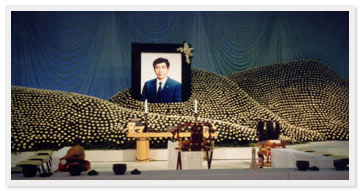
The memorial service was held at a huge arena in Nagano Prefecture. 10 flower craftsmen and 10 carpenters were brought in from Tokyo for the project. Although the carpenters had finished the foundation of the floral arrangement, they had disregarded my design that would allow for a flowing design (design requirement #4), and created a boxy bench-like foundation. When asked why they ignored my design, the carpenters replied that they could not create the curved lines I had in my design. Instinctively, I suggested we cut the "bench" in four places to create a flow, and one of the older, experienced carpenters took on the task.
My older brother was gracious enough to take time off from work and drive me to Nagano early the next morning. He was experienced in memorial floral arrangements and would be able to give us his support if something were to go wrong.
Many funeral staff members' cars had already parked at the Nagano Arena when we arrived. They had started putting up huge drapes, and several reception tables were already in place, under huge tents. I thought about how many important people from financial and political circles would be coming to pay their respects, as I walked onto the stage.
A group of carpenters brought the foundation for the floral arrangement to the stage, and we set it up closer to what I had originally designed. The huge photo of the deceased, to be placed above the casket, arrived. I had never seen such a huge photo. After the lighting technician showed me how the lighting changed how the photo looked, I realized that the carpenters were nowhere to be found. It was just after 6pm, but our goal for the night was to complete the floral arrangement foundation on the stage by 9pm, in order to start arranging the chrysanthemums early the next morning.
I found out that the carpenters had talked about going to the hot springs — there are several famous hot springs in Nagano. Several staff members and I rushed to find the carpenters, and we caught up to them right as they were getting into their cars to leave for the hot springs. It took a lot of pleading, but I finally convinced them to stay and finish their work by 9pm.
A quick digression; we finished just after 9pm and I somehow ended up at the same hot springs as the carpenters. Ironically, it was not a very relaxing bath.
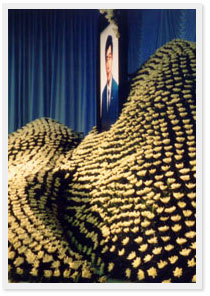 The next day, it was the flower craftsmen's time to shine. Their experienced hands worked fast to put each chrysanthemum in place. Since I had to act like a director instead of a designer for this project, my job was to sit at a desk with my laptop and compare my layout to what was being created on stage to ensure the floral arrangement was coming along according to the client's expectations.
The next day, it was the flower craftsmen's time to shine. Their experienced hands worked fast to put each chrysanthemum in place. Since I had to act like a director instead of a designer for this project, my job was to sit at a desk with my laptop and compare my layout to what was being created on stage to ensure the floral arrangement was coming along according to the client's expectations.
The curved section in the front part of the foundation was not to my liking, so I requested that height and depth be added to that area. The chief designer, who was younger than me but seemed to have ample experience, explained that not only was the curved line impossible, but that at the height I requested, the chrysanthemums would not get enough water.
Though he was polite, I sensed that he was annoyed that I, an inexperienced designer from Los Angeles, was questioning his design of the Japanese memorial flower arrangement from behind a desk. I took a chrysanthemum in my hand and placed it at the height that I wanted, to show him that I was a fellow floral professional. He understood, and continued working on the project diligently.
I had designed three flowing lines that would descend from left to right, using only the white chrysanthemums to evoke images of nature's grandeur such as waves or a mountain range. I found a problem with the backside of the three "mountains."
The audience would not be able to see this from their seats, but from the corner of the stage, I could see that chrysanthemums were not used on the backside of the "mountain." The designer had decided that since the backside was not visible to the audience, there was no need to place flowers there. This would be true in most cases, since it would help keep the project within the clients' budget.
Having met the funeral host a few days earlier, however, my instinct told me that the client was someone who would appreciate the use of chrysanthemums on the backside if it would convey the splendor of the design. It almost felt like he had a sixth sense.
Chrysanthemums were added to the backside, and when we tested the lighting, the overwhelming impact of the flowing white chrysanthemums was proof of the finished project's splendor.
When the host and relatives arrived from Tokyo, they walked around the stage and looked at the floral arrangement in silence, but later praised the funeral staff. Unfortunately, I was unable to hear their words of praise in person — the moment I knew the project was complete, I was overcome with fatigue and fell asleep in the folds of the drapes on stage.
The funeral staff also thanked me, for helping them please their clients whom they thought would never be satisfied. This was the end of the most expensive project I had ever been involved with in my life. The total cost of the funeral was over a million dollars.
